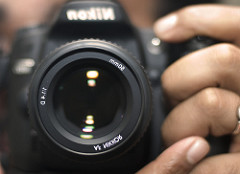 It’s a great question and sometimes you will get conflicting answers.
It’s a great question and sometimes you will get conflicting answers.
If you are looking for an image to add to your blog or website, you have two major things to determine:
- Is the image appropriate?
- Are you allowed to use the image legally?
The answer to both questions is of equal importance, because if you use an image without permission, you, as the owner of your site, are liable for copyright infringement. And don’t think you won’t be discovered. Big image providers use sophisticated search engines to regularly look for their images, and their equally sophisticated legal department will send you a cease and desist order and a hefty bill (think $1,000 for one image!)
It used to be easy to find free to use images. Microsoft Word was a terrific partner in this process. One need only insert a picture in a document and MS Word would offer all sorts of images: icons, photos and even videos. These images were free to use in any form. But Microsoft Word abandoned their clip art library in December 2014, as it had grown unwieldy and expensive. The original MS Word had 6 clip art pieces but by 2014, there were 100,000.
So now what?
Now you are relegated to searching for and ascertaining the legality of images yourself. There are a few free image sources out there. Some are clunkier than others. Popular ones include Wikimedia Commons, flickr, Pixabay and openclipart. Each of these sites allows you to download images for commercial use. You have to read the fine print. Not every image is “in the public domain”. Some require attribution. Others cannot be modified in any way (like cropped, shrunk or enlarged).
Another source for images is the ubiquitous Google images. You can sort images (in the search button on the right) by usage rights and further by “free for reuse”. But just because Google images “says” an image is indeed free for public use, you still have to do your due diligence. We suggest you click on the image and find its source.
Major caveat: If Google has offered an image as free, and you use it incorrectly, Google will not be sued; you will.
You can also purchase images from a variety of stock image purveyors. We find a lot of very good stuff. You do have to sift through some weird stuff, too. We love the sites that have collected the most outlandish stock photos everywhere. Check out these weird stock photos!
Of course, sometimes we can’t find exactly what we need. Then we have to turn to our cadre of skilled graphic designers and photographers to create the perfect image. This is a more expensive option, but for big things (logos, website headers, press releases, brochures), it makes financial sense.
Searching for and finding the perfect image is work, but well worth it when your copy is paired with an evocative, attractive image that enhances your brand.